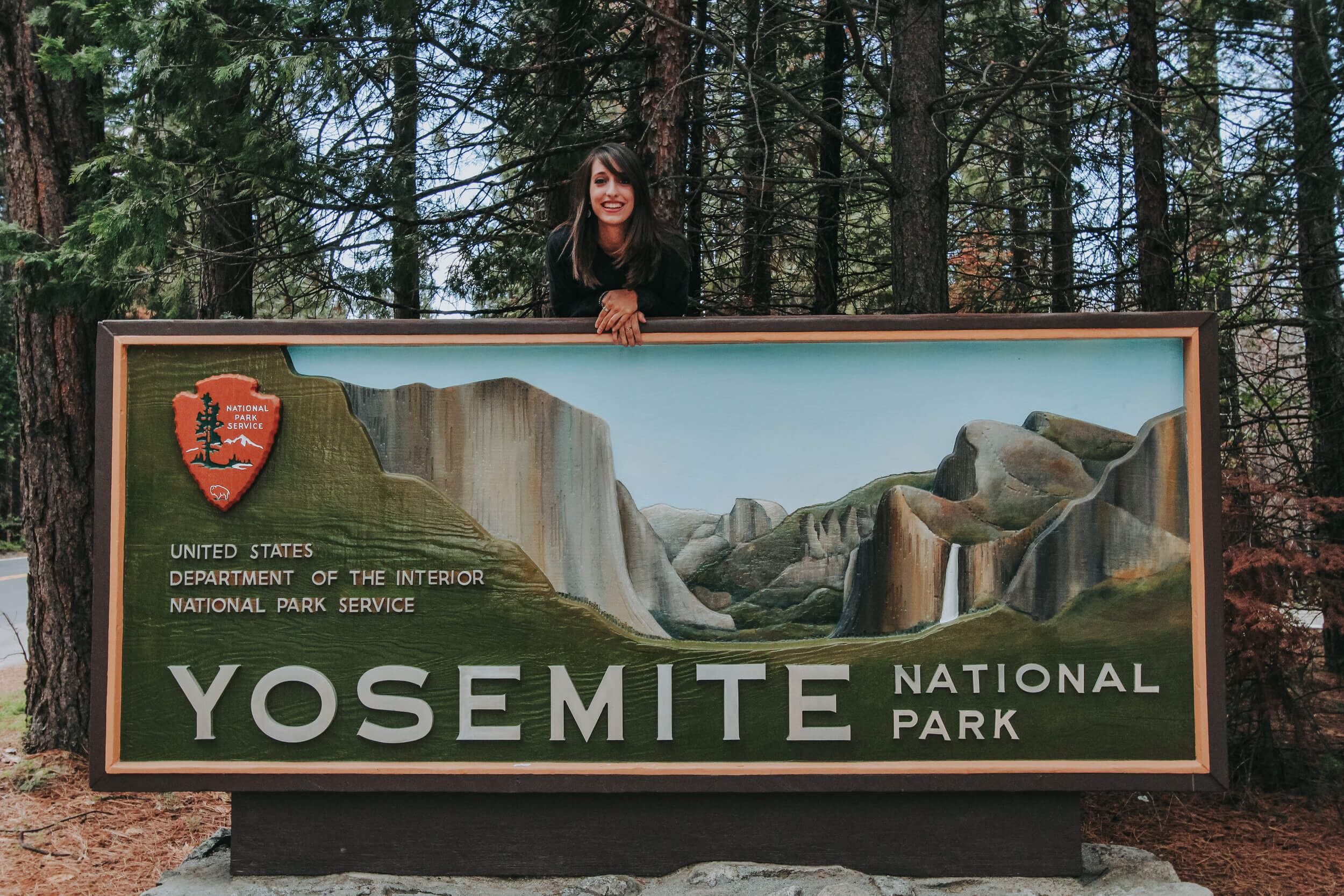This week is special for travelers and adventurers because it is National Park Week! Every April, usually falling the week of Earth day, each of the National Parks and the National Park Foundation (the official charity of America’s National Parks) partner together to celebrate the natural treasures of each park. National Park Week is a time to learn the history and culture of each park, explore amazing sights, and educate on how to create a better environment and protect the parks. In honor of this week and Earth Day, I have compiled all of the National Parks I have journeyed to thus far on my travels!
National Park Week 2021 is from April 17 – 25 of this year. Parks across the country will host special programs and events throughout the week. There will also be some digital experiences to view virtually! Each day focuses on a different theme to highlight different ways in which we can enjoy the National Parks!
For more information, visit the National Park Service website.
ACADIA NATIONAL PARK
Acadia National Park is the most Eastern Park in the United States and is located along the coast of Maine in New England. Acadia has been on my list to visit for years, and 3 full days were spent exploring the park and the nearby seaside town of Bar Harbor. This park is perfect for sightseers and outdoor enthusiasts alike! There are countless trails around the park as well as sights to see along Park Loop Road. Visitors enjoy 27 miles of historic motor roads, 158 miles of hiking trails, and 45 miles of carriage roads.

QUICK FACTS ABOUT ACADIA NATIONAL PARK:
Established as a National Park: January 19, 1919, but officially named Acadia National Par in 1929. It is one of the top 10 national parks visited in the United States!
Location: 25 Visitor Center Rd, Bar Harbor, ME 04609 (Hulls Cove Visitor Center)
Best time of year to visit: Late Spring and Fall. The two weeks after Labor day offer lesser crowds before the fall foliage season starts.
How many days are needed inside the Park: 2-3 days to explore Park Loop Road, some hiking trails, and Mount Desert Island.
Closest airports: Hancock County Airport (10 miles) and Bangor International Airport (60 minutes)
Closest major cities and towns: Mount Desert (6.7 miles), Bar Harbor (8.5 miles), and Bangor (50 miles)
Notable sites to see: Park Loop Road (Sand Beach, Thunder Hole, Otter Point), Cadillac Mountain, Jordan Pond, and the Precipice and Beehive Trails.
To read more about my trip to Acadia National Park, check out my post here.



DENALI NATIONAL PARK
Denali National Park, located in Alaska, features 6 million acres of wildlife, views, trails, and tours. It is also home to the highest peak in the United States, Mount McKinley (or Denali) at 20,310 feet high. The terrain of the tundra is filled with glaciers and spruce forests and is home to an array of wildlife including `moose, grizzly bears, wolves, and Dall sheep. During the summer months, the park is filled with popular activities like hiking, backpacking, biking, and mountaineering.

QUICK FACTS ABOUT DENALI NATIONAL PARK:
Established as a National Park: February 26, 1917. However, there was no road access to the park entrance until 1957 when the Denali Highway was opened.
Location: Parks Hwy, Denali National Park and Preserve, AK
Best time of year to visit: the Summer Season from June to mid- September
How many days are needed inside the Park: 2-3 days
Closest airport: Fairbanks International Airport (125 miles)
Closest major cities and towns: Healy (18 miles) and Fairbanks (125 miles)
Notable sites to see: Denali Park Road, Horseshoe Lake Trail, Wonder Lake, Mount Healy Overlook Trail, and the Husky Homestead.
To read more about my trip to Denali National Park, check out my post here.



MOUNT RAINIER NATIONAL PARK
Mount Rainier stands as an icon in the Washington landscape. Ascending to 14,410 feet above sea level, Mount Rainier is an active volcano and is the most glaciated peak in the contiguous United States of America. The park spans 235,625 acres and roughly 97% of the park is designated as wilderness. There are over 260 miles of maintained trails and 147 miles of roads, some of which are open seasonally. Wildlife roams the park’s ecosystems, while subalpine wildflower meadows grow amongst the icy volcano. At Mount Rainer’s lower slopes are ancient forests with countless trails ready to be hiked!

QUICK FACTS ABOUT MOUNT RAINIER NATIONAL PARK:
Established as a National Park: March 2, 1899. President McKinley signed the legislation, making Mount Rainier the fifth national park in the United States.
Location: 55210 238th Ave E, Ashford, WA 98304
Best time of year to visit: July through August
How many days are needed inside the Park: 2-3 days
Closest airports: Seattle-Tacoma International Airport (85 miles), Portland International Airport (131 miles), Yakima Air Terminal (134 miles)
Closest major cities and towns: Ashford (23 miles), Tacoma (58 miles) Seattle (103 miles).
Notable sites to see: Mount Rainier, Grove of the Patriarchs Trail, Reflection Lake, Mt. Fremont Fire Lookout, and the Wonderland Trail.



OLYMPIC NATIONAL PARK
Located on Washington’s Olympic Peninsula in the Pacific Northwest is Olympic National Park! The park extends close to one million acres across several different ecosystems, such as the peaks of the Olympic mountains, old-growth temperate rainforest, and over 70 miles of wild coastline. Diversity is a signature feature of this park, with its range of precipitation and elevation. While the summit of Mount Olympus is popular with climbers, and there are hiking and backpacking trails that cut through the park’s rainforests and along the Pacific coastline.

QUICK FACTS ABOUT OLYMPIC NATIONAL PARK:
Established as a National Park: June 29, 1938. In 1937, President Franklin Roosevelt visited the Olympic Peninsula and added his support to the establishment of this National Park, which was officially established the following year.
Location: 3002 Mt Angeles Rd, Port Angeles, WA 98362
Best time of year to visit: Spring through Fall
How many days are needed inside the Park: 3-4 days
Closest airport: Seattle–Tacoma International Airport (130 miles)
Closest major cities and towns: Port Angeles (1.8 miles), Sequim (47.5 miles), Forks (56.5 miles), Seattle (82.4)
Notable sites to see: Hoh Rainforest, Hurricane Ridge, Ruby Beach, Lake Crescent, Second Beach Trail, La Push Beach, and Sol Duc Valley.



ROCKY MOUNTAIN NATIONAL PARK
At 415 square miles, Rocky Mountain National Park spans the Continental Divide and encompasses protected mountains, forests, and alpine tundra. The park’s Trail Ridge Road, which peaks at over 12,000 feet includes several overlooks to experience the subalpine and alpine worlds. Over 300 miles of hiking trails, wildflowers, and wildlife can be found off of Trail Ridge Road too!

QUICK FACTS ABOUT ROCKY MOUNTAIN NATIONAL PARK:
Established as a National Park: January 26, 1915. The area was established in the 1870’s during the gold rush era, by 1904, a section of U.S. Route 34 was completed outside of the park, making way for the Estes Park entrance of Rocky Mountain National Park.
Location: 1000 US-36, Estes Park, CO 80517 (Beaver Meadows Visitor Center)
Best time of year to visit: Although July through August are the most popular months to visit the park and surrounding areas, November through April is the best time to visit to avoid crowds.
How many days are needed inside the Park: 3-4 days
Closest airport: Denver International Airport (80 miles)
Closest major cities: Estes Park (7.9 miles), Boulder (44.7 miles), Denver (78.5 miles), Winter Park (111 miles), Vail (126 miles)
Notable sites to see: Alpine Ridge Road, Old Fall River Road, Trail Ridge Road, Longs Peak, Sprague Lake, Glacier Gorge, Bear Lake, and Gore Range Overlook.



YOSEMITE NATIONAL PARK
Out of all of the National Parks that I have visited over the years, Yosemite National Park has been my favorite to explore so far! It is best known for its waterfalls, countless trails, towering granite monoliths, deep valleys, and ancient giant sequoias. This park is located in California’s Sierra Nevada mountains and is nearly 1,200 square miles!

QUICK FACTS ABOUT YOSEMITE NATIONAL PARK:
Established as a National Park: October 1, 1890. Designated by an Act of Congress, Yosemite National Park was made the third national park in the United States, after Yellowstone (1872) and Sequoia (1890). Last year, 2020 marked the park’s 130th birthday!
Location: 9035 Village Dr, Yosemite Valley, CA 95389 (Yosemite Valley Visitors Center)
Best time of year to visit: May and September
How many days are needed inside the Park: 3-4 days
Closest airports: Mammoth Yosemite Airport (42 miles), Fresno-Yosemite International (64.8 miles), Merced Airport (71.4 miles), Oakland International (150.3 miles), San Fransisco International (169.2 miles), San José International (187.5 miles).
Closest major cities: El Portal (14.9 miles), Yosemite West (17.6 miles), Mariposa (43.3 miles), Sacramento (116 miles), San Jose (131 miles), Oakland (147 miles).
Notable sites to see: Half Dome, El Capitan, Upper and Lower Yosemite Falls, Tunnel Viewpoint, Glacier Point, Mariposa Grove, Tuolumne Meadows, and Tioga Road.



The United States truly has some amazing National Parks to visit, and there are so many beautiful places to see on this Planet Earth! I encourage you to spend some time this National Park week in nature and celebrate Earth Day, whether it is going for a hike or simply spending some time outside in your local neighborhood!
How are you celebrating National Park Week and Earth Day this year?
What are some of your favorite National Parks that you have visited?
Comment below!




Leave a Reply